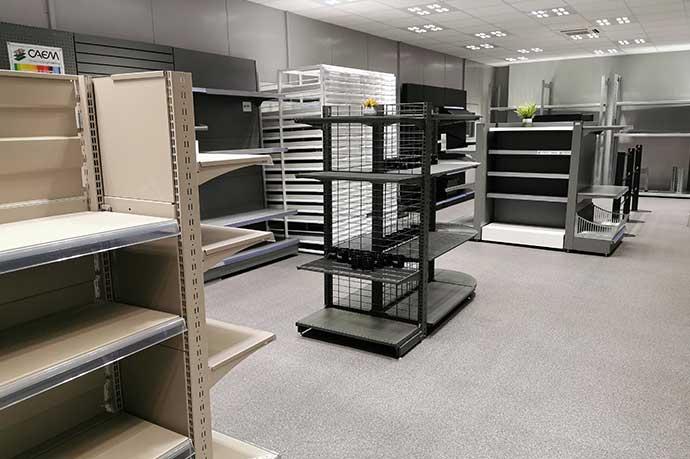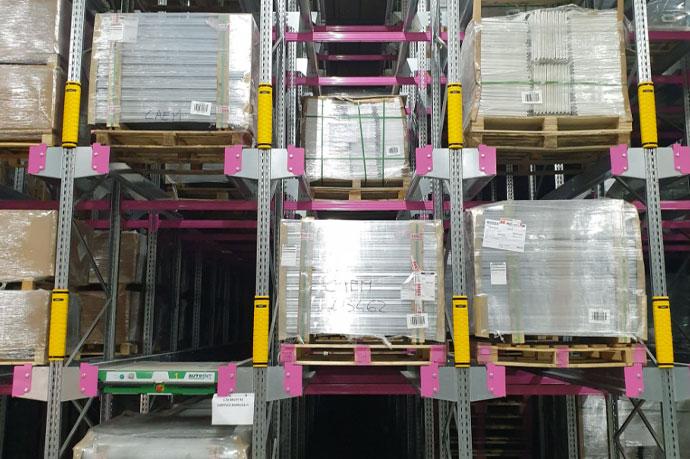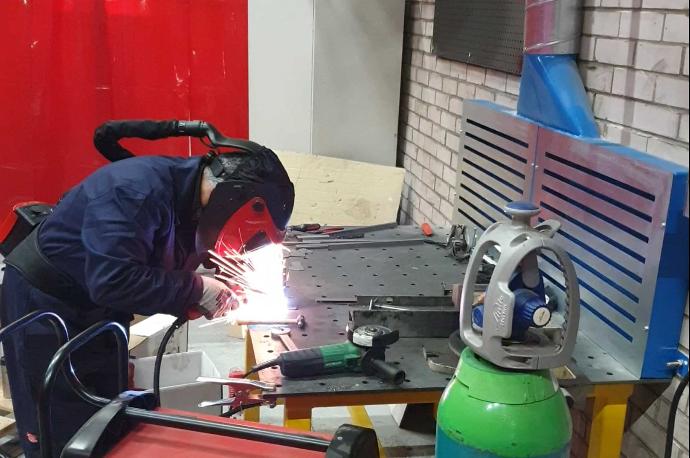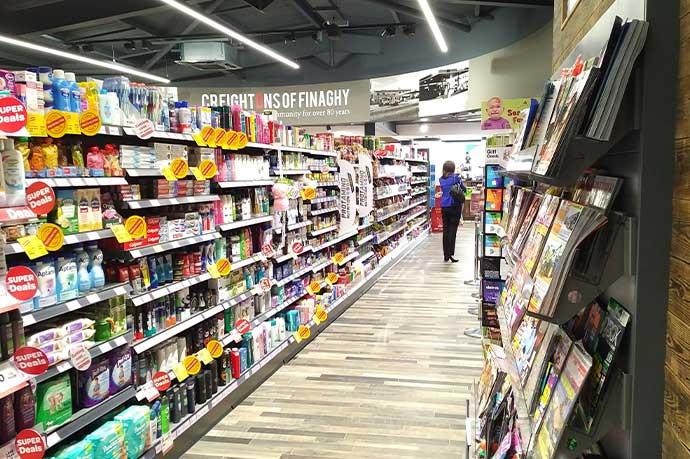Efficient Healthcare Storage Solutions
Maximising Efficiency and Safety with Advanced Healthcare Storage Solutions
Modern healthcare facilities are under constant pressure to deliver better patient outcomes, streamline operations, and safeguard both staff and patients. At the heart of these objectives lies a crucial, often overlooked element: effective healthcare storage. The urgency for sophisticated storage solutions has intensified as the healthcare data storage market experiences explosive growth, projected to reach $15.54 billion by 2032 with healthcare facilities generating 30 petabytes of data annually in 2023 alone.
Understanding the Importance of Healthcare Storage
The Role of Storage in Enhancing Patient Care
Healthcare storage directly influences patient care by ensuring that essential medical supplies and equipment are always within reach. Recent studies demonstrate that modern storage solutions contribute to a 25% reduction in data-related adverse events, including medication errors and delayed diagnostics, through faster access to electronic health records and critical supplies. Well-organised systems reduce the risk of delays by making it simple for staff to locate and retrieve what they need, while secure storage protects sensitive materials and controlled substances, maintaining both safety and regulatory compliance.
Impact on Staff Efficiency and Time Management
The efficiency gains from modern storage solutions are substantial. Health systems implementing advanced storage architectures report up to 40% reduction in data retrieval times compared to legacy systems. When storage is thoughtfully planned, staff spend less time searching for supplies and more time with patients. Clearly labelled, accessible units streamline daily routines, lowering workplace stress and improving productivity. Real-world implementations show that hospitals can achieve 20% improvement in nurse time efficiency related to documentation and medication delivery through streamlined storage and data capture systems.
Key Challenges in Healthcare Storage
Space Limitations and Organisational Constraints
Physical space in healthcare settings is always at a premium. Facilities must maximise storage capacity while preserving accessibility, requiring solutions that adapt to a range of inventory types and fluctuating operational needs. Modern high-density storage solutions can double the storage capacity of healthcare facilities, whether storing medical records, medications, or important archival items. Customisable, modular systems—such as those offered by CAEM—help overcome these constraints by providing flexible configurations that fit any layout.
Ensuring Compliance with Hygiene and Safety Standards
Hygiene is non-negotiable in healthcare. Storage units must be easy to clean and designed to prevent contamination, supporting infection control protocols. Modern storage solutions with proper closing and securing mechanisms limit access to medicines and devices, improving safety for both users and patients. Advanced systems have enabled a 35% reduction in security breaches and compliance-related fines through better access controls, audit trails, and disaster recovery mechanisms.
Types of Healthcare Storage Solutions
Medical Storage Racks and Cabinets
Features and Benefits of Different Rack Sizes
Healthcare storage demands variety. From compact cabinets for pharmaceuticals to large racks for equipment, each solution must balance space efficiency with accessibility. Modular designs, like CAEM's D25 system, allow for customisation and scalability, accommodating everything from small consumables to bulky devices. Durable, powder-coated finishes ensure longevity and support stringent hygiene standards, while options such as translucent trays and adjustable shelving enhance visibility and organisation.
The Nantes University Hospital's experience demonstrates the power of integrated storage systems. Their biomedical data warehouse implementation saved an estimated 25% of staff time previously used for manual data retrieval while consolidating disparate archives into a single platform, reducing redundant storage requirements across more than 20 clinical sources.
Best Practices for Organisation and Accessibility
Grouping similar items together and using clear labelling systems is fundamental. Adjustable shelving and compartmentalised trays make it easier to rotate stock and keep inventory current. Strategic placement—positioning storage units near their point of use—minimises unnecessary movement, streamlining workflow and reducing wasted time. Henry County Hospital's implementation of advanced storage systems resulted in 30% faster documentation turnaround and substantial reduction in paper record storage costs.
Mobile Storage Units and Trolleys
Advantages of Mobility in Healthcare Settings
Mobile storage units and trolleys bring flexibility to dynamic healthcare environments. Supplies and equipment can be transported swiftly between departments, supporting rapid response during emergencies. Modular components and colour-coded trays help staff quickly identify and organise items on the move, while robust, easy-to-clean surfaces ensure that mobility never compromises hygiene. These solutions can be placed closer to points of care, improving efficiency in treatment delivery.
Real-World Success Stories
The Royal Children's Hospital Melbourne exemplifies successful mobile storage implementation. Their expansion of mobile workflows between 2022-2024 achieved 20% improvement in nurse time efficiency related to documentation and medication delivery. The hospital repurposed substantial space previously used for paper charts, converting it for enhanced patient care activities.
RFID and Smart Storage Technologies
How RFID Technology Streamlines Inventory Management
RFID-enabled storage systems are revolutionising inventory management. These solutions automate tracking, provide real-time visibility into stock levels, and generate alerts for low inventory or expired items. Automation reduces manual errors, supports timely reordering, and ensures compliance with regulations for controlled substances and critical supplies. The return on investment for such systems is compelling, with healthcare organisations reporting average ROI improvements of 20-30% within two years of implementation.
Future Trends: The Rise of IoT in Healthcare Storage
The integration of IoT devices is enabling remote monitoring of storage conditions, such as temperature and humidity—essential for preserving sensitive medications and supplies. Smart storage units increasingly feature digital access controls and app-based management, combining security with convenience. Data-driven insights from connected systems are now guiding better inventory planning and space utilisation across healthcare facilities.
Facility-Specific Storage Solutions
Hospital Storage Requirements
Large hospital systems face unique challenges with their diverse departments and high patient volumes. Operating theatres require sterile storage with rapid access to surgical instruments, while emergency departments need mobile solutions for quick deployment. Ward storage must balance security for controlled substances with accessibility for routine care. The integrated approach works best, as demonstrated by facilities that have successfully integrated data from more than 20 distinct clinical sources to create unified storage and retrieval systems.
Clinic and Outpatient Facility Considerations
Smaller clinical settings benefit from compact, versatile storage that maximises limited space. Wall-mounted systems and modular units that can adapt to changing needs prove most effective. These facilities often see the greatest relative improvement from modern storage, with some reporting complete elimination of paper-based record storage and associated space liberation.
Pharmacy-Specific Storage Solutions
Pharmacies require specialised storage for controlled substances, temperature-sensitive medications, and high-volume dispensing. Automated dispensing systems with RFID tracking provide both security and efficiency, while climate-controlled storage units ensure medication integrity. The focus on compliance and audit trails makes advanced storage systems particularly valuable in pharmaceutical settings.
Long-Term Care Facility Needs
Extended care facilities require storage solutions that support both medical needs and personal belongings management. Mobile carts for medication rounds, secure storage for resident valuables, and easily accessible supply stations characterise effective storage in these environments. The emphasis on infection control makes easy-to-clean, non-porous surfaces essential.
Troubleshooting Common Storage Challenges
Space Constraint Solutions
When floor space is limited, vertical storage solutions and wall-mounted systems maximise capacity. High-density mobile shelving can double storage in the same footprint, while ceiling-mounted storage serves infrequently accessed items. Conducting regular space audits helps identify underutilised areas and optimisation opportunities.
Infection Control Compliance Issues
Storage units with smooth, non-porous surfaces reduce contamination risks. Implementing colour-coded systems helps prevent cross-contamination between departments. Regular cleaning protocols and staff training ensure storage systems support rather than hinder infection control efforts. Choosing materials that withstand frequent disinfection maintains both hygiene and durability.
Staff Compliance and Training Challenges
Clear labelling systems and intuitive organisation reduce training time for new staff. Visual cues and standardised layouts across similar storage units help maintain consistency. Regular feedback sessions with staff identify practical issues and improvement opportunities. Involving end-users in storage system design increases adoption and compliance rates.
Implementation Timeline and Budget Considerations
Planning Phase (Weeks 1-4)
Initial assessment of current storage systems and needs analysis typically requires 2-3 weeks. This includes inventory audits, workflow observations, and staff consultations. Budget planning should account for both immediate system costs and long-term operational savings. The planning phase investment pays dividends, as proper assessment ensures solutions match actual needs.
Installation and Testing (Weeks 5-8)
Professional installation of modular systems like CAEM's D25 typically takes 1-2 weeks, depending on facility size and complexity. Pilot testing with select departments helps identify issues before full deployment. This phase allows for adjustments and staff familiarisation without disrupting critical operations.
Full Deployment and Training (Weeks 9-12)
Gradual rollout across departments minimises disruption while ensuring proper training and support. Documentation of new procedures and ongoing support from suppliers like CAEM ensures successful adoption. Budget considerations should include training time and temporary productivity impacts during transition periods.
Budget Planning Guidelines
Initial investment in quality storage systems typically ranges from £5,000-£50,000 depending on facility size and complexity. However, facilities should consider the strong ROI potential, with modern storage solutions delivering 20-30% improvement in operational efficiency within two years. Financing options and phased implementations can help manage cash flow while capturing immediate benefits.
Designing Effective Healthcare Storage Spaces
Combining Hygiene with Efficient Use of Space
High-density shelving, compact drawer systems, and wall-mounted modules help facilities maximise every square metre. Customisable configurations, like CAEM's D25 Modular System, adapt to any room layout and can be expanded as needs change. Innovative designs focus on accessibility and ease of cleaning, supporting both efficiency and infection control.
Smooth, non-porous surfaces and minimal crevices in storage units reduce the risk of contamination and simplify cleaning routines. Organisational aids, such as adjustable dividers and pull-out trays, promote systematic arrangement and help maintain order. Regular cleaning protocols and easily accessible storage encourage staff to uphold hygiene standards.
Customisation and Flexibility in Design
Each healthcare setting presents unique challenges. Custom storage solutions, backed by professional consultation and space planning, ensure that systems align with specific workflows and spatial constraints. CAEM's approach includes ongoing support and post-installation adjustments, allowing facilities to adapt storage as their needs evolve. Modular storage units offer unmatched flexibility through interchangeable components and scalable designs, making it simple to expand or reconfigure storage as inventory grows or shifts.
Enhancing Safety and Accessibility with Reliable Healthcare Storage
Ensuring Safety Compliance and Risk Mitigation
Storage solutions must meet stringent safety standards, with features such as secure access controls and tamper-proof designs. The evidence shows that proper implementation delivers measurable safety improvements, with modern systems contributing to 35% fewer security incidents and compliance fines. Regular audits and maintenance are vital for ongoing compliance and risk mitigation.
Promoting Easy Access for Medical Staff and Emergency Situations
Systems should enable rapid access to supplies, especially in emergencies. Logical organisation, clear labelling, and ergonomic design all contribute to efficient retrieval and reduced physical strain for staff. The time savings are significant, with some facilities reporting documentation turnaround times reduced by 30% after implementing advanced storage systems.
Continuous Improvement and Feedback Loops
A culture of continuous improvement, supported by regular feedback from staff, ensures that storage solutions evolve alongside healthcare needs. This adaptability is key to maintaining safety, efficiency, and regulatory compliance. Successful implementations like those at Hamad Medical Corporation have achieved higher-than-average staff satisfaction through ongoing system refinement and enhanced training programmes.
For over 30 years, CAEM has been at the forefront of healthcare storage innovation, supplying modular, durable, and cost-effective solutions to hospitals, pharmacies, and veterinary practices. Their flagship D25 Modular System, with features like full-extension drawers, adjustable dividers, and flexible installation options, exemplifies the company's commitment to maximising space, enhancing workflow, and supporting rigorous hygiene standards.
The evidence for investing in advanced healthcare storage has never been stronger. With healthcare data generation reaching 30 petabytes annually and the storage market growing at 14.23% annually, healthcare facilities that invest in quality storage solutions position themselves for measurable improvements in patient care, staff efficiency, and operational costs.
Ready to transform your healthcare storage? Contact CAEM today for a comprehensive consultation and space assessment. Their expert team will design a customised solution that addresses your specific challenges while positioning your facility for future growth. With proven results including doubled storage capacity, significant time savings, and enhanced patient safety outcomes, the question isn't whether you can afford to upgrade your storage systems—it's whether you can afford not to.





